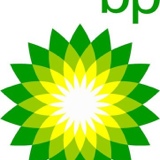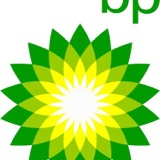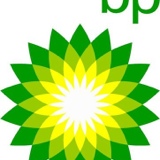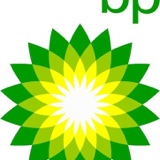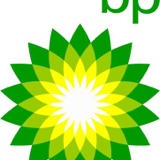Information
-
Document No.
-
Audit Title
-
Client / Site
-
Conducted on
-
Prepared by
-
Location
-
Personnel
Section 1: Shore Side Procedures
-
1.1 Did the Expeditor liaise with the inspectors and monitor their performance against RIICS and BP Measurement Manual?
-
1.2 Did the attending expeditor check that valves were set correctly?
-
1.3 Did the expeditor determine the nature and quantity in both the shore tanks and the shore lines used in the operation?
-
1.4 Did the expeditor check the condition of the shore line before commencement? If there was a discrepancy of >2.0%, did the expeditor request a second line displacement?
-
1.5 Did the expeditor check the floating roof status?
-
1.6 If automatic tank gauging was used, did the expeditor check the gauge proving records?
-
1.7 Did the expeditor monitor the ship/shore difference periodically throughout the operation?
-
1.8 If two or more products were handled on the vessel, did the expeditor minimise any cross contamination risk?
-
1.9 If there was a difference in manual measurement data and automatic measurement data, was this reported to the relevant site personnel?
-
1.10 Did the expeditor record the liquid levels in the idle tanks on the load/discharge system?
-
1.11 Did the expeditor tank calibration details and the date of the next scheduled calibration?
-
1.12 Was the expeditor professional and courteous throughout the operation?
-
1.13 Was the expeditors behaviour in compliance with BP's ethical standards?
Section 2: Vessel Measurement
-
2.1 Did the expeditor ensure that the inspectors carried out appropriate measurements in an accurate and timely manner?
-
2.2 If vessel equipment was used for measuring temperature, did the expeditor ensure that the equipment was checked against calibrated equipment?
-
2.3 Did the expeditor attend the pre transfer meeting between ship and shore personnel and ensure that BP's requirements were mentioned?
-
2.4 Did the expeditor check and record the nature of the previous cargoes and ensure that the vessels tanks, lines and pumps were suitable?
-
2.5 Did the expeditor check the vessels tank cleaning records and compare to BP's tank cleaning guidelines?
-
2.6 If the vessel had previously carried crude oil, did the expeditor check the cleaning method used prior to the loading of the subsequent cargo?
-
2.7 Did the expeditor ensure that the inspector each cargo tank for the following: a) oil level, b) oil temperature, c) free water d) reference height?
-
2.8 Did the expeditor maintain a pumping log which included manifold pressure, pump pressure and shore line pressure?
-
2.9 On a discharge, did the expeditor monitor the stripping operation and ensure that the tanks and lines were fully stripped?
-
2.10 Did the expeditor record the loading or discharge sequence for each tank?
-
2.11 If free water was found, was the depth recorded or intensity of paste spotting noted?
-
2.12 If the quantity of free water found was more than 0.5% of the cargo volume, was the BP contact informed?In
-
2.13 Did the expeditor ensure that the inspector carried out all ship side measurement procedures in accordance with RIICS?
-
2.14 Did the expeditor calculate his own VEF in accordance with API 17.9/HM 49?
-
2.15 Did the expeditor confirm manual draft readings?
Section 3: Sampling and Quality
-
3.1 Did the expeditor check that the sampling equipment used by the inspector was adequate?
-
3.2 Were the sampling procedures suitable for the product sampled?
-
3.3 Does the sampling technique ensure that there is no change of quality of the sample for the proposed testing?
-
3.4 Did the expeditor check that all samples drawn were properly labelled?
-
3.5 If an in-line automatic sampler was used, did the expeditor gather enough information to check that the sampler was set up correctly?
-
3.6 Did the expeditor confirm that the sample receiver was clean and dry and sealed?
-
3.7 Was the sampler set up in flow proportional mode?
-
3.8 For sensitive cargoes, did the expeditor ensure that RIICS Form C was followed?
-
3.9 If required to witness analysis, did the expeditor witness the analysis effectively?
-
3.10 Was a volumetric composite sample prepared?
-
3.11 When witnessing analysis, was the expeditor able to demonstrate knowledge of test methods?
-
3.12 If deviations from the test method were observed, was the expeditor able to actively intervene and advise?
-
3.13 If open sampling was conducted, did the expeditor ensure that the BP open sampling guidelines were followed?
Section 4: Communication and Planning
-
4.1 Was a pre-operation meeting carried out with relevant ship and shore personnel in attendance? Was the quantity of cargo to be transferred agreed upon?
-
4.2 Did the meeting discuss potential hazards, safety and communications?
-
4.3 Did the expeditor discuss the following: a) number of tanks and quantity of cargo to be transferred between each? b) previous cargoes and quality? c) the current voyage and possible in transit movement of cargo? d) proposed loading/discharge rates? e) tank coatings, heating , tank and line preparation? f) ballasting? g) proposed cargo plan?
-
4.4 Was the expeditor fully aware of BP's requirements and were these discussed with ship's staff?
-
4.5 Was good communication maintained with the BP operator throughout the operation?
-
4.6 Did the expeditor verify shore line fullness?
-
4.7 If a shore line displacement was refused, did the expeditor ensure that the inspector issued a letter of protest?
Section 5: HSSE
-
5.1 Did the expeditor follow all refinery/terminal, vessel and port safety regulations?
-
5.2 Was all equipment used by the expeditor of an approved type with relevant permits obtained?
-
5.3 Was PPE as worn by the expeditor appropriate to task?
-
5.4 Did the expeditor wear a hydrogen sulphide monitor?
-
5.5 Did the expeditor observe and report any potentially hazardous operations?
-
5.6 Has the expeditor received external safety training e.g. VCA?
-
5.7 Did the expeditor comply with limitations on the use of electrical equipment, such as mobile phones and lap tops?
Section 6: Metering
-
6.1 Did the expeditor obtain open and close readings from either the meter head or flow computer output?
-
6.2 Did the expeditor ask for copies of meter tickets and proving reports?
-
6.3 Did the expeditor ask for copies of the calibration certificates if PD meters were used?
-
6.4 Were meter factors established?
-
6.5 Did the expeditor record readings for temperature and pressure?
-
6.6 Were metered quantities compared to shore tank delivery?
Section 7: Calculations and Loss Investigation
-
7.1 On completion of the operation, did the expeditor compare all relevant figures and calculations to ensure consistency of data/calculation or loss?
-
7.2 Did the expeditor instigate an investigation if the percentage difference after VEF calculation exceeded 0.25%?
-
7.3 Did the expeditor calculate or check that the inspectors VEF calculation was compliant to API 17.9/HM 49?
-
7.4 Did the expeditor use current VCF's (2000 tables)?
-
7.5 If any differences exceeded established tolerances, did the expeditor investigate by checking: a) measurements, b) calculations, c) errors?
-
7.6 Did the expeditor advise BP of any unreconciled loss and follow up with recommendations?
-
7.7 Did the expeditor collect copies of all relevant documents?
Section 8: Crude Oil Washing and Cargo Stripping Operations
-
8.1 Was the expeditor aware of BP's COW guidelines?
-
8.2 Did the expeditor instruct the vessel to follow the COW guidelines?
-
8.3 Did the expeditor review the discharge plan and make recommendations where appropriate?
-
8.4 Did the expeditor verify COW machine settings?
-
8.5 Did the expeditor keep notes and records pertaining to the COW and Stripping operation?
-
8.6 Did the expeditor monitor the stripping operation?
-
8.7 Has the expeditor had training and experience in COW operations?
-
8.8 Did the expeditor recommend using fresh crude for COW drive?
Section 9: Observations and Comments
-
Cargo Assurance
